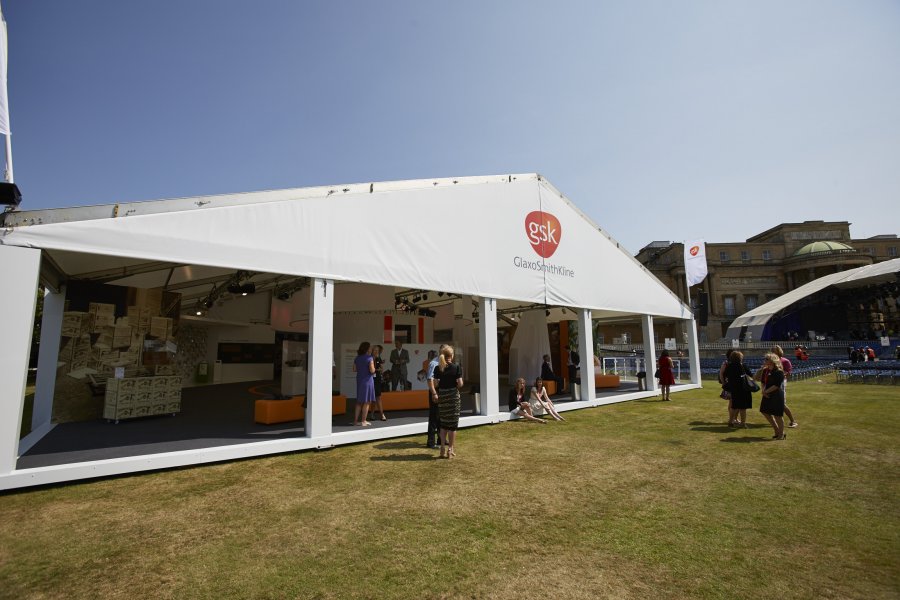Now that it’s time to write about Prince Charles, I find myself facing the opposite problem I faced before writing about his father. I essentially knew nothing about Prince Philip…but part of me thinks I might already know too much about Prince Charles. I watched—just as you probably did too—as his personal life spun out of control in the 1990s, in a spiral of infidelity, telltale diaries by members of his house staff, and scathing private telephone conversations made public. For years we got too much information about this man. If you’re like me and you could really do without learning any more incredibly personal details about Prince Charles, then don’t worry; the factoid I’m about to share is a fairly innocuous one. Prince Charles brushes his teeth with Maclean’s brand toothpaste, which is made by Glaxosmithkline. Glaxosmithkline Consumer Healthcare holds a Royal Warrant from HRH the Prince of Wales as “Suppliers of Toothpaste.”
Just as I did with Queen Elizabeth II and Prince Philip, I began my research on Prince Charles at the Chicago Public Library. There’s no shortage of books written about the heir to the British throne, but nearly all of those taking up shelf space at the library told the story of his marriage to Princess Diana, of her tragic death, and of his somewhat scandalous remarriage to his longtime lover Camilla. Certainly I’ll get to this aspect of his life soon enough, but for now I just want to know more about the prince’s childhood. It doesn’t seem possible—when scanning the descriptions of more recent biographies—to understand who Prince Charles was before his train wreck of a marriage clouded the lens of public perception about him. That’s maybe why a biography published in 1979 caught my eye. For the past week I’ve been reading The Man Who Will Be King: H.R.H. by Tim Heald and Mayo Mohs. Although Heald and Mayo spend a lot of time speculating about whether Prince Charles will ever get married and who he will select as his possible bride, Diana’s name never crosses their long list of his girlfriends and potential suitors. To get this early look at Prince Charles without any mention of Diana is therefore fascinating and refreshing.
Unlike his mother, who did not become heir to the throne until unexpected circumstances prevailed, Prince Charles was born with the expectation that he would one day be king. His mother’s pregnancy was closely followed by the British public, who wondered if Princess Elizabeth would produce a male heir. She did just that on November 14, 1948, in Buckingham Palace. As news of the birth leaked out to the media, a celebratory crowd gathered outside of Buckingham Palace, and the noise grew so loud that the new family couldn’t sleep. Heald and Mohs share that it was actor David Niven—among the many people in the crowd—who finally convinced everyone to quiet down.
The intensity of the public gaze on Charles has continued throughout his entire life, has never subsided for one second. That’s probably why—when he brushes his teeth each day—he reaches for a turquoise tube of Maclean’s whitening toothpaste. He must look his best at all times. As their old commercials from the 1970s suggest, “every time you smile it shows...it shows you chose Maclean’s.”
In 2002 an embarrassing rumor surfaced that the Prince employed a valet to squeeze his toothpaste onto his toothbrush for him. The article was meant to shed light on the large number of paid employees staffing his royal residence. This was picked up in newspapers from London to Sydney, where the Morning Herald complained:
His lifestyle would seem extravagant even to France’s “Sun King” Louis XIV: a team of four valets so that one is always available to lay out and pick up his clothes; a servant to squeeze his toothpaste on to his brush, and another who once held the specimen bottle while he gave a urine sample. Step into the world of the Prince of Wales, a lifestyle so pampered that even the Queen has complained that it is grotesque.
Although the story got a lot of press in that year, more recent articles suggest it was nonsense. (Or at least the part about someone getting his toothbrush ready for him).
I’ve been squeezing Maclean’s onto my own toothbrush for about a month now, and I love this stuff. I’ve been a consistent Crest user all my life and—while I’ll certainly go back to using Crest when the Maclean’s runs out—that’s only because I don’t think you can easily buy it here in the U.S. Maclean’s has a much better taste than Crest, and it doesn’t leave the same kind of aspartame-y aftertaste in my mouth. I started to worry last week that maybe taste isn’t everything and that I’d have a mouth full of cavities when I went to my upcoming dentist appointment. When I saw my dentist, though, I got the opposite report. I didn’t have a single cavity, and the dental hygienist said my teeth look great.
Where to buy: Maclean’s is sold in the United Kingdom, the Middle East, Africa, Australia, and New Zealand. If you live in the U.S., you can still buy it from Amazon.com or from Britsuperstore.com, a website I think I’m going to have to learn more about...
Photo credit: GlaxoSmithKline's tent at the 2013 Coronation Festival at Buckingham Palace, courtesy of Theo Cohen Photography.
Photo credit: GlaxoSmithKline's tent at the 2013 Coronation Festival at Buckingham Palace, courtesy of Theo Cohen Photography.




No comments:
Post a Comment